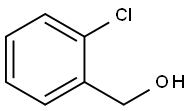2-Fluorobenzonitrile
- CAS NO.:394-47-8
- Empirical Formula: C7H4FN
- Molecular Weight: 121.11
- MDL number: MFCD00001773
- EINECS: 206-897-7
- SAFETY DATA SHEET (SDS)
- Update Date: 2025-01-27 09:38:02

What is 2-Fluorobenzonitrile?
Chemical properties
colorless to light yellow liquid
The Uses of 2-Fluorobenzonitrile
2-Fluorobenzonitrile, also known as o-fluorobenzonitrile, is an organic aromatic fluoride. It has a wide range of applications in pharmaceuticals, pesticides, dyestuffs, etc. In the field of dyestuff, the introduction of fluorine atom makes the dyed products bright and colorful and less likely to fade, among other advantages.
The Uses of 2-Fluorobenzonitrile
2-Fluorobenzonitrile was used in the synthesis of :
3-amino-1,2-benzisoxazoles
6-(acetylaminomethyl)-3-amino-1,2-benzisoxazole
5-(4′-methyl [1, 1′-biphenyl]-2-yl)-1H-tetrazole
xanthone-iminium triflates
General Description
2-Fluorobenzonitrile reacts with lithium N,N-dialkylaminoborohydride reagent to yield 2-(N,N-dialkylamino)benzylamines.
Properties of 2-Fluorobenzonitrile
| Melting point: | -13.7 °C |
| Boiling point: | 90 °C21 mm Hg(lit.) |
| Density | 1.116 g/mL at 25 °C(lit.) |
| refractive index | n |
| Flash point: | 165 °F |
| storage temp. | Sealed in dry,Room Temperature |
| solubility | Chloroform |
| form | Liquid |
| color | Clear colorless to light brownish |
| Water Solubility | Insoluble |
| BRN | 2042184 |
| CAS DataBase Reference | 394-47-8(CAS DataBase Reference) |
| NIST Chemistry Reference | Benzonitrile, 2-fluoro-(394-47-8) |
| EPA Substance Registry System | Benzonitrile, 2-fluoro- (394-47-8) |
Safety information for 2-Fluorobenzonitrile
| Signal word | Danger |
| Pictogram(s) |
 Corrosion Corrosives GHS05  Exclamation Mark Irritant GHS07 |
| GHS Hazard Statements |
H302:Acute toxicity,oral H315:Skin corrosion/irritation H318:Serious eye damage/eye irritation H335:Specific target organ toxicity, single exposure;Respiratory tract irritation |
| Precautionary Statement Codes |
P261:Avoid breathing dust/fume/gas/mist/vapours/spray. P280:Wear protective gloves/protective clothing/eye protection/face protection. P305+P351+P338:IF IN EYES: Rinse cautiously with water for several minutes. Remove contact lenses, if present and easy to do. Continuerinsing. |
Computed Descriptors for 2-Fluorobenzonitrile
| InChIKey | GDHXJNRAJRCGMX-UHFFFAOYSA-N |
2-Fluorobenzonitrile manufacturer
New Products
1-Boc-4-cyanopiperidine tert-Butyl carbazate 1-(TERT-BUTOXYCARBONYL)-2-PYRROLIDINONE TETRABUTYLAMMONIUM CYANIDE TETRAHYDRO-2H-PYRAN-3-OL 3-Pyridineacrylic acid Nickel(II) perchlorate hexahydrate, 98% 4-Bromophenylacetonitrile, 95% 3-Bromo-4-fluoroaniline, 97% Sodium tetraborate decahydrate, 98% Palladium(II) acetate, trimer, Pd 99% 4-Bromo-2-chlorotoluene, 97% Tadalafil Clopidogrel bisulfate Sitagliptin Phosphate Monohydrate Cabergoline Fexofinadine HCl Etoricoxib 4-Amino Acetophenone 2-Chloro Acetophenone Amlodipine Base 2,3,5-Triiodobenzoic Acid Pyrrolidine Diiodo PentoxideRelated products of tetrahydrofuran








You may like
-
 394-47-8 2-FLUOROBENZONITRILE 98%View Details
394-47-8 2-FLUOROBENZONITRILE 98%View Details
394-47-8 -
 2-Fluoro Benzonitrile 98%View Details
2-Fluoro Benzonitrile 98%View Details
394-47-8 -
 394-47-8 98%View Details
394-47-8 98%View Details
394-47-8 -
 o-Fluorobenzonitrile, 99% CAS 394-47-8View Details
o-Fluorobenzonitrile, 99% CAS 394-47-8View Details
394-47-8 -
 2-Fluoro-benzonitrile 394-47-8 98%View Details
2-Fluoro-benzonitrile 394-47-8 98%View Details
394-47-8 -
 o-Fluoro Benzonitrile 394-47-8 99%View Details
o-Fluoro Benzonitrile 394-47-8 99%View Details
394-47-8 -
 2-Fluorobenzonitrile CAS 394-47-8View Details
2-Fluorobenzonitrile CAS 394-47-8View Details
394-47-8 -
 2-Fluorobenzonitrile CAS 394-47-8View Details
2-Fluorobenzonitrile CAS 394-47-8View Details
394-47-8
Statement: All products displayed on this website are only used for non medical purposes such as industrial applications or scientific research, and cannot be used for clinical diagnosis or treatment of humans or animals. They are not medicinal or edible.
